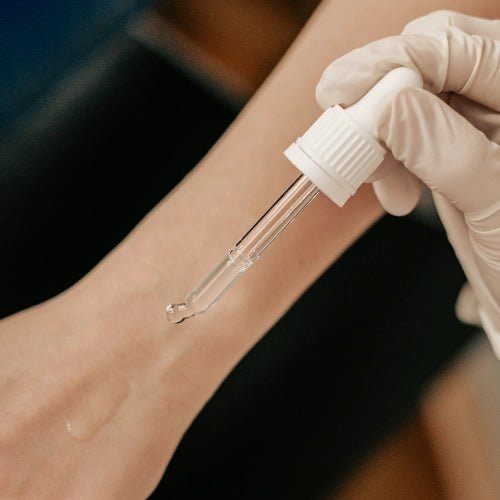
Allergy test - instructions
Allergy test
Do you know the first rule of competent introduction to the use of new cosmetics? It says: we test everything without exception! At the same time, the method of verification depends on the type of cosmetic product. Today we will tell you how to properly test a new product in the field of care cosmetics.Why test?
The very concept of "allergy" implies an unusual reaction or increased sensitivity to something. Thus, it is difficult to predict the body's reaction to unusual ingredients, and even harmless substances in cosmetics can cause allergies.
It's an allergy!
An allergic reaction to the components of cosmetics can be mild (slight itching, redness), and can cause serious health problems:
- puffiness;
- the appearance of wet or peeling spots;
- swelling
That is why cosmetologists recommend repeating the test in a more sensitive area in the absence of allergy symptoms. In particular, if it is about personal care, then a little of the product should be reapplied to the point behind the ear. If the reaction is still not observed, you can safely use the novelty without fear of health problems.
We test creams, lotions and other products that do not need to be washed off
This list also includes cosmetic oils, protective products (winter protection, ultraviolet, etc.), serums, antioxidants, vitamin preparations for external use, peptides.
The test is carried out as follows: a little of the product is applied to the inner part of the forearm. The delicate skin in this area is similar in structure to the skin of the eyelids, and the reaction will be most pronounced there.
The test result can be evaluated a day after application. The tool should not be used if it causes even the slightest discomfort.
Products that require removal after use
This category includes masks, foams and gels for washing, as well as other products, including decorative cosmetics. To test, apply a small amount of the product to dry clean skin of the forearm and wash off after the appropriate amount of time according to the instructions.
Means for peeling
You should be especially careful here, as these products are literally rubbed into the skin. Friction increases the risk of allergic reactions and requires special attention to the smallest manifestations. Peelings for the face are subject to a particularly thorough inspection.
Testing is done on the upper forearm, and the product is left for the period indicated in the instructions for use.
In the absence of a reaction, face peeling is re-tested on the area behind the ear.
When testing a new cosmetic, you should remember that this testing is only a preliminary test, which is not a medical examination and does not guarantee the absence of reactions in the future with regular use.
To minimize the risk of complications, you should test several times on different parts of the body and give preference to proven brands that use natural components in the production of cosmetics.










